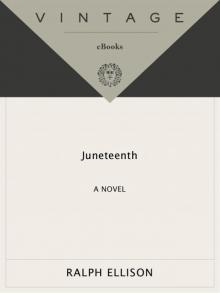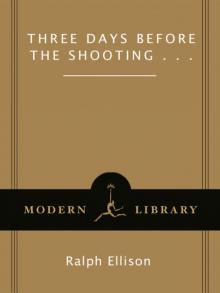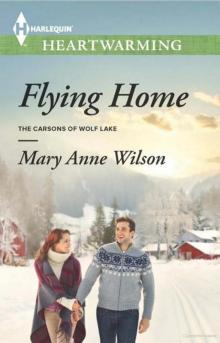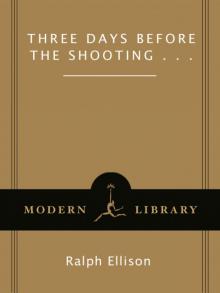- Home
- Ralph Ellison
Three Days Before the Shooting . . .
Three Days Before the Shooting . . . Read online
ALSO BY RALPH ELLISON
Invisible Man
Shadow and Act
Going to the Territory
The Collected Essays of Ralph Ellison
Flying Home and Other Stories
Juneteenth
Living with Music
Trading Twelves
RALPH ELLISON
RALPH WALDO ELLISON WAS born in Oklahoma City, Oklahoma, on March 1, 1913. His father, a construction foreman and later the owner of a small ice-and-coal business, died when his son was three. Ellison and his younger brother, Herbert, were raised by their mother, who worked as a nursemaid, janitor, and domestic, and was active in politics. As a child he was drawn to music, playing trumpet from an early age and studying classical composition at Tuskegee Institute under the instruction of William L. Dawson. Of his musical influences he later said: “The great emphasis in my school was upon classical music, but such great jazz musicians as Hot Lips Page, Jimmy Rushing, and Lester Young were living in Oklahoma City …. As it turned out, the perfection, the artistic dedication which helped me as a writer, was not so much in the classical emphasis as in the jazz itself.”
In July 1936, after his junior year at Tuskegee, Ellison went to New York to earn money for his senior year and to study sculpture, and stayed. In June 1937 his friendship with Richard Wright began and led him toward becoming a writer. Ellison also made the acquaintance of Langston Hughes and the painter Romare Bearden, among others. From 1938 until World War II he worked on the New York Federal Writers Project of the WPA. Starting in the late 1930s, he contributed reviews, essays, and short fiction to New Masses, Tomorrow, The Negro Quarterly (of which he was for a time managing editor), The New Republic, Saturday Review, The Antioch Review, Reporter, and other periodicals. During the war he served in the merchant marine, and afterward he worked at a variety of jobs, including freelance photography and the building and installation of audio systems.
Over a period of seven years Ellison wrote Invisible Man, which was recognized upon its publication in 1952 as one of the most important works of fiction of its time. It was on the bestseller list for sixteen weeks and won the National Book Award. Its critical reputation and popularity have only grown in the more than five decades since its publication. Although an excerpt from a second novel was published in the magazine Noble Savage in 1960, and seven other selections in various literary magazines between then and 1977, no other work of fiction appeared under Ellison’s name during his lifetime. Shadow and Act (1964) and Going to the Territory (1986) collect essays and interviews written over more than forty years.
From 1955 to 1957 Ellison was a fellow of the American Academy in Rome. Returning to the United States, he taught and lectured at a wide range of institutions including Bard College, the State University of New York at Stony Brook, the University of Chicago, Rutgers, Harvard, Brown, and Yale. He was awarded the Presidential Medal of Freedom in 1969; was named a Chevalier de l’Ordre des Arts et Lettres in 1970 by the French minister of culture, André Malraux; and was given the National Medal of Arts in 1985. He was a charter member of the National Council on the Arts and Humanities, and from 1970 to 1979 was Albert Schweitzer Professor in the Humanities at New York University.
After a brief first marriage Ellison married Fanny McConnell in 1946; for more than forty years, until his passing on April 16, 1994, they lived on Riverside Drive in Harlem.
Posthumous editions of Ellison’s work, edited and with an introduction by John F. Callahan, include The Collected Essays of Ralph Ellison (1995); Flying Home and Other Stories (1996); Juneteenth (1999), the central narrative in the unfinished second novel; and Trading Twelves: The Selected Letters of Ralph Ellison and Albert Murray (2000), each published by Random House, Inc.
CONTENTS
BIOGRAPHICAL NOTE
CHRONOLOGY OF COMPOSITION
GENERAL INTRODUCTION TO Three Days Before the Shooting …
PART I
EDITORS’ NOTE TO BOOK I
PROLOGUE
BOOK I
BOOK II
EDITORS’ NOTE TO BOOK II
EDITORS’ NOTE TO “BLISS’S BIRTH”
BLISS’S BIRTH
PART II
INTRODUCTION TO RALPH ELLISON’S COMPUTER SEQUENCES
EDITORS’ NOTE TO “HICKMAN IN WASHINGTON, D.C.”
HICKMAN IN WASHINGTON, D.C.
EDITORS’ NOTE TO “HICKMAN IN GEORGIA & OKLAHOMA”
HICKMAN IN GEORGIA & OKLAHOMA
EDITORS’ NOTE TO “MCINTYRE AT JESSIE ROCKMORE’S”
MCINTYRE AT JESSIE ROCKMORE’S
PART III
A SELECTION OF/ ELLISON’S NOTES
TWO EARLY DRAFTS OF THE OPENING OF BOOK II
VARIANTS FOR “ARRIVAL”
EIGHT EXCERPTS PUBLISHED BY ELLISON
And Hickman Arrives
The Roof, the Steeple and the People
It Always Breaks Out
Juneteenth
Night-Talk
A Song of Innocence
Cadillac Flambé
Backwacking, a Plea to the Senator
CHRONOLOGY OF COMPOSITION
1951
MAY 14
Ellison writes to the essayist and novelist Albert Murray that he is “trying to get started on my next novel (I probably have enough stuff left from the other if I can find the form).”*
1953
APRIL 9
Writes Murray of his intention “to drive out to Oklahoma this spring … and I plan to scout the southwest. I’ve got to get real mad again, and talk with the old folks a bit. I’ve got one Okla. book in me I do believe.”
1954
FEBRUARY 14
Writes to Murray, “As for me I’m in my old agony trying to write a novel. I’ve got some ideas that excite me and a few scenes and some characters, but the rest is coming like my first pair of long pants—slow as hell. Never mind, I’ll get it out, it just takes time to do anything worth while.”
MAY 19
Writes to Morteza Sprague, an English professor at Tuskegee, that “the whole road [of post-segregationist America] stretched out and it got all mixed up with this book I’m trying to write and it left me twisted with joy and a sense of inadequacy.” He says he is “writing about the evasion of identity which is another characteristically American problem which must be about to change. I hope so, it’s giving me enough trouble.” [Written two days after Supreme Court handed down Brown v. Board of Education decision.]
1955
APRIL
Sends to Murray “a few riffs from Cliofus,” an early draft excerpt from his work-in-progress.
SEPTEMBER
Arrives in Rome to take up residence as a fellow at the American Academy of Arts and Letters (until September 1957).
NOVEMBER 22
Writes to his editor, Albert Erskine, “Dear Albert: I received your message about spending eight hours in my study and I’m glad to inform you that while I don’t quite manage eight hours, I do spend the major part of the day here—and working.”
DECEMBER 14
Writes to Erskine, “As for me the cold and my upset over the misunderstanding [over Invisible Man printings and stocking] threw me off schedule for a few days but I’m back at it, with the first section still giving me hell. I’d like to junk it but without it I wouldn’t have a story. But thank the gods that I haven’t reached the point where you have to be worried with that!”
1956
MARCH 20
Murray writes to Ellison, “Dear Ralph, You writin’ good, boy, realgood, blowing good, cutting good, keen & deep. If you gettin’ any of this stuff working in there with old Cleofus & em you still swinging that switchbla
de and you aint got nothing to worry about. For my money you’re in there with that shit, man.”
JUNE 22
Writes to the literary critic Stanley Edgar Hyman, “As for me, most of my writing is on the book, which is much more difficult than I had imagined. Still it’s rolling along and I’ve become quite fond of the Old preacher and his six year old revivalist whose great act is an antiphonal rendering of the seven last words of Christ with the little boy sitting in a small coffin. Wild things arise from this, but I’m still having trouble giving the book the dramatic drive I feel it needs. Will do, though; will do. Just learned that the kid preacher’s name, Bliss, means rapture, a yielding to experience. Very American because of the overtones of progress and this guy really becomes Dick Lewis’ ‘in space.’ Having fun, as you can see. Today the old preacher is talking Aristotle (though unaware) as he tells kid just why coffin has to be a certain size. So I guess if I don’t succeed in making book dramatic I can at least reveal the principles as they operate in life. Trick of course it [sic] to do both. Read Radin’s TRICKSTER, give it a look if you haven’t …”
1957
APRIL 4
Writes to Murray, “I’ve been up to my ass in typescript and have only just climbed out of one level of the mess after another back to my novel.”
SEPTEMBER
Returns to United States from American Academy in Rome.
1958
FEBRUARY 6
Writes to Murray, “As for me I’m working hard now both with the novel and a piece which Hyman feinted me into doing …”
FEBRUARY 26
Writes to Saul Bellow, “Things aint coming worth a damn.”
JUNE 27/JULY 17
“I’ve been working frantically on the book, trying to complete a section while the emotion was still strong within me.… I guess I must be nearing the completion, recently the typewriter has been drawing me like a magnet. Bellow has read book two and is to publish about fifty pages in a new mag which he is editing—THE NOBLE SAVAGE—of all things!”
SEPTEMBER 21
Writes to Bellow from Bellow’s house in Tivoli, New York, where Ellison is living while he teaches at Bard College, that he has brought up his electric typewriter in hopes that it will expedite his work on the novel.
1959
JUNE 27/JULY 17
Writes to Murray, “It has been a most interesting year, full of irritations and discoveries; progress on the novel and a definite deepening of my perception of the themes which I so blindly latched on to. I guess old Hickman is trying to make a man out of me—at this late date.”
1960
JANUARY 19
Writes to Bellow, “I haven’t been able to work for two weeks and I feel that I’m falling apart. I find myself in strange places in my dreams and during the days Hickman and Bliss and Severen seem like people out of some faded dream of nobility. They need desperately to be affirmed while I seem incapable of bringing them fully to life. I hope seeing some of the book in print will improve my morale and this shouldn’t be long now …”
Publishes “And Hickman Arrives” in Saul Bellow’s Noble Savage, first excerpt from novel-in-progress.
Publishes “The Roof, the Steeple and the People,” Quarterly Review of Literature 10, No. 3.
1963
Publishes “It Always Breaks Out,” Partisan Review 30, No. 1.
1965
Publishes “Juneteenth,” Quarterly Review of Literature 13, Nos. 3–4.
“Bliss’s Birth” draft, hand-dated by Ellison.
1967
Fire at Plainfield, Massachusetts, home destroys what Ellison calls “a summer’s worth of revisions on my novel.”
1968
“Hickman and Wilhite at Mister Jessie’s.”
1969
Publishes “Night-Talk,” Quarterly Review of Literature.
1970
Publishes “A Song of Innocence,” Iowa Review 1, No. 2.
Becomes Albert Schweitzer Professor of the Humanities at New York University (to 1979).
1971
Draft of “Night,” aka “Mother Strothers.”
Draft of “Through the Lilt and Tear,” long variant of opening for Book II.
1972
JUNE/JULY
Completes revisions of Book I and II typescripts.
Draft of Lonnie Barnes speech from Rockmore’s.
1973
FEBRUARY
Publishes “Cadillac Flambé,” American Review 16.
1974
NOVEMBER 14
Random House writes to extend delivery date of second novel from August 17, 1965, to September 30, 1975.
1977
Publishes “Backwacking, a Plea to the Senator,” Massachusetts Review 18.
1978
JUNE 5
Random House writes to extend delivery date for second novel from August 17, 1965, to May 1, 1980.
Revises “A Song of Innocence.”
Revises “Through the Lilt and Tear.”
1981
NOVEMBER
Forty-page hand-edited draft entitled “Bliss” typed and filed under “Bliss-Hickman (Final).” (Additional drafts dated 1959.)
1982
JANUARY 8
Purchases Osborne 1 computer.
1983
JUNE 20
Writes to literary critic and philosopher Kenneth Burke in computer-printed letter, “You’re probably right about a sequel to I.M. being impossible, but even if it weren’t I’d have no desire to undertake it. I’m having enough trouble just making a meaningful form out of my yarn concerning a little boy preacher who rises to high estate and comes asunder. There are all kinds of interesting incidents in it, but if they don’t add up it’ll fall as rain into the ocean of meaningless words. I guess what’s bothering me right now is working out a form for that NEXT PHASE of which you write. // Anyway, I’m still writing—or will be at it again as soon as we can get out of the city and end up in the Berkshire hills ….”
OCTOBER 11
Purchases Osborne Executive computer.
1985
JANUARY 9 (POSTMARK DATE ON ENVELOPE)
Writes note of frustration about his computer: “Osborne // I’m writing this on an EXECUTIVE computer and an IBM Quiet printer that am so ignorant of the how to patch the damn thing that I’m wasting a good part of my investment.”
1988
JANUARY 7
Purchases IBM computer.
OCTOBER
Hires friend David Sarser to transfer files from old computer to new computer. Transfer erases all file dates prior to 1988.
1992
MAY–SEPTEMBER
Revises all but three “Hickman in Oklahoma” files from “Hickman in Georgia and Oklahoma” section.
1993
JULY
Revises all of “Hickman in Washington, D.C.” section on computer.
DECEMBER 30
Saves last known file, “Rockmore.”
1994
APRIL 16
Dies at his home on Manhattan’s Riverside Drive.
* Trading Twelves: The Selected Letters of Ralph Ellison and Albert Murray, ed. Albert Murray and John F. Callahan (2000), is the single best source on Ellison’s progress and perspective on the second novel from 1951 to 1960.
GENERAL INTRODUCTION TO THREE DAYS BEFORE THE SHOOTING …
I
WHEN RALPH ELLISON DIED, on April 16, 1994, he left behind no explicit instructions for what should be done with the multiple drafts of his unfinished, untitled second novel. What he left instead was an expansive archive of handwritten notes, typewritten pages, and computer files that he had been at work on since the early 1950s. In an interview just two months before his death, Ellison affirmed that “the novel has got my attention now. I work every day, so there will be something very soon.” This undoubtedly came as welcome news for readers of Ellison’s fiction, who had been waiting some forty years since the publication of Ellison’s 1952 classic, Invi
sible Man, for the promised second novel. For them, “soon” was not nearly soon enough.
Taking Ellison at his word, one might reasonably have expected to find among his papers a single manuscript very near to completion, bearing evidence of the difficult choices he had made during the protracted period of the novel’s composition. Or one might have expected, perhaps, that Ellison’s manuscript-in-progress might resemble F. Scott Fitzgerald’s The Last Tycoon, a fragment with a clearly drafted, clearly delineated beginning and middle, whose author’s notes and drafts pointed toward two or three endings, each of which followed and resolved the projected novel as a whole. Or, to cite a more contemporary example, it might have resembled Roberto Bolaño’s unfinished novel 2666; upon its posthumous publication in 2008, Bolaño’s editor remarked that, had the author lived to see it through to publication, “its dimensions, its general content would by no means have been very different from what they are now.” In the extreme, Or one might have expected, something like James Joyce’s Finnegans Wake, a glorious mess of a novel that defies the very generic constraints of the form.
Ellison left behind something else entirely: a series of related narrative fragments, several of which extend to over three hundred manuscript pages in length, that appear to cohere without truly completing one another. In fact, the thousands of handwritten notes, typewritten drafts, mimeographed pages and holographs, dot-matrix and laser printouts, testify to the massive and sustained effort Ellison exerted upon his fiction, but also to his ultimate failure to complete his manuscript so long in progress. In Three Days we have a work that both meets and does not meet Ellison’s expectations, expressed in his 1956 essay “Society, Morality, and the Novel,” that “every serious novel” be “a discussion of the craft, a conquest of the form, a conflict with its difficulties, and a pursuit of its felicities and beauty.”
As the facts about Ellison’s second novel come into focus, it becomes more and more difficult to imagine him completing the book even if he had enjoyed a run of good years beyond 1994. This is not to say that he would have stopped writing. Far from it. Ellison once said by way of describing himself as a novelist, “I’m a fast writer, but a slow worker.” This may help explain the seeming paradox of his writing thousands of pages over the second half of the twentieth century, yet never mastering many of the basic textual challenges presented by his material, not the least of which was the “very stern discipline” of bringing his narrative to some kind of resolution. Instead, he drafted multiple versions of the same handful of scenes, sometimes with subtle, sometimes with striking differences, while seeming never to have composed the necessary connective episodes that could have made his fiction whole.

 Juneteenth
Juneteenth Invisible Man
Invisible Man Three Days Before the Shooting . . .
Three Days Before the Shooting . . . Flying Home and Other Stories
Flying Home and Other Stories King of the Bingo Game
King of the Bingo Game Flying Home
Flying Home Three Days Before the Shooting ...
Three Days Before the Shooting ...